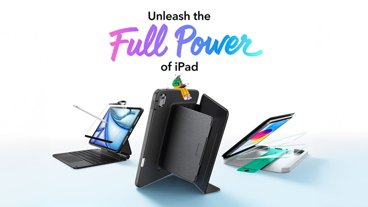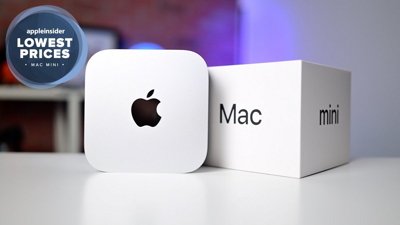The concept was revealed in a new patent application made public this week by the U.S. Patent and Trademark Office and discovered by AppleInsider. Entitled "Using an Audio Cable as an Inductive Charging Coil," the invention describes winding an audio cable around a charging mechanism multiple times to form an inductive receiving coil.
In the application, Apple notes that inductive charging techniques have been employed with great success in electric toothbrushes. But a toothbrush can be recharged using a small inductive receiving coil because it is placed in the charging stand for many hours at a time and is only used for about two minutes.
For a device like a portable media player or cell phone, a significantly larger charging coil is required. Apple says that a receiving coil could be integrated into a device like an iPhone, but this would increase the size of the device.
Apple's proposed solution would involve winding an audio cable for an iPhone or iPod around a charging station. A magnetic field would be created through the charging mechanism, inducing a current in the receiving coil and recharging the battery in the portable device.
When the device is being charged, the headphones would remain plugged into the media player and the wires attached to the headphones would be wrapped around the charging tower. The user would then attach a contact from one of the earphones back to the iPhone or iPod, which would complete the inductive charging coil.
Simply wrapping the headphone wires around a charging tower could greatly increase the speed at which a device would be charged, when compared with the charging time of something like an electric toothbrush.
"Note that the speed of the inductive charging increases with the length of the inductive receiving coil," the application reads. "Consequently, a long receiving coil is desirable to achieve a reasonable charging rate, and such longer receiving coils can be hard to provide in a small electronic device.
"In a sense, using (an) audio cable... as the inductive receiving coil effectively provides a long receiving coil 'for free,' because the long audio cable... is already being used to carry audio signals."
The filing goes on to use the Palm Pre's method of inductive charing as an example of how "cumbersome" and "bulky" other methods can be. The Pre, for instance utilizes a snap-on attachment to facilitate charging.
"Moreover, for some extremely small media players, such as the iPod Shuffle, the weight of the media player is approximately the same weight of the headphones and associated cable," Apple wrote. "Hence, by using the headphones as inductive coils, an extremely small media player can effectively use about half of its mass as a charging coil."
The application notes that the charging tower could be configured to allow users to easily wrap the audio cable around it, by using a textured surface or placing grooves to allow the cable to rest on the tower without slipping.
Apple also said that the earphones included with an iPod or iPhone could include a conductive metal mesh screen that would also function as an electrical contact.
"This type of electrical contact (through the earphone mesh) can also be used to receive current for a conventional non-inductive charging system," it reads. "This eliminates the need to provide a separate interface to receive the charging current in a conventional charging system."
The proposed invention made public this week was first filed by Apple with the USPTO in February of 2010. It is credited to Fletcher R. Rothkopf, Anna-katrina Shedletsky, and Stephen Brian Lynch.
 Neil Hughes
Neil Hughes








-m.jpg)






 Malcolm Owen
Malcolm Owen
 Andrew O'Hara
Andrew O'Hara
 Christine McKee
Christine McKee

 Amber Neely
Amber Neely
 Andrew Orr
Andrew Orr
 William Gallagher
William Gallagher









39 Comments
Palm did it years ago, and better.
This just seems mad. A device will charge when docked with a standard connector, that's not exactly difficult to do.
Wrapping the headphones around an extra device that sits on your desk has no benefit that I can see - just more clutter.
I'm not saying induction can't be used somewhere but this doesn't seem to be the answer!!
Another idea that will never see the light of day... At least not like this.
The charging base that Palm devices and even my toothbrush use is a far more elegant solution.
Yeah, kinduva dumb idea really.
I routinely listen to my iPod while it's docked, which would be impossible in this scheme. At first glance, this does appear to be nonsense. Perhaps the main claims for this invention (induction via the headphone cables) are a smoke screen for something else in the patent. A careful reading of the patent might reveal what it's really getting at.